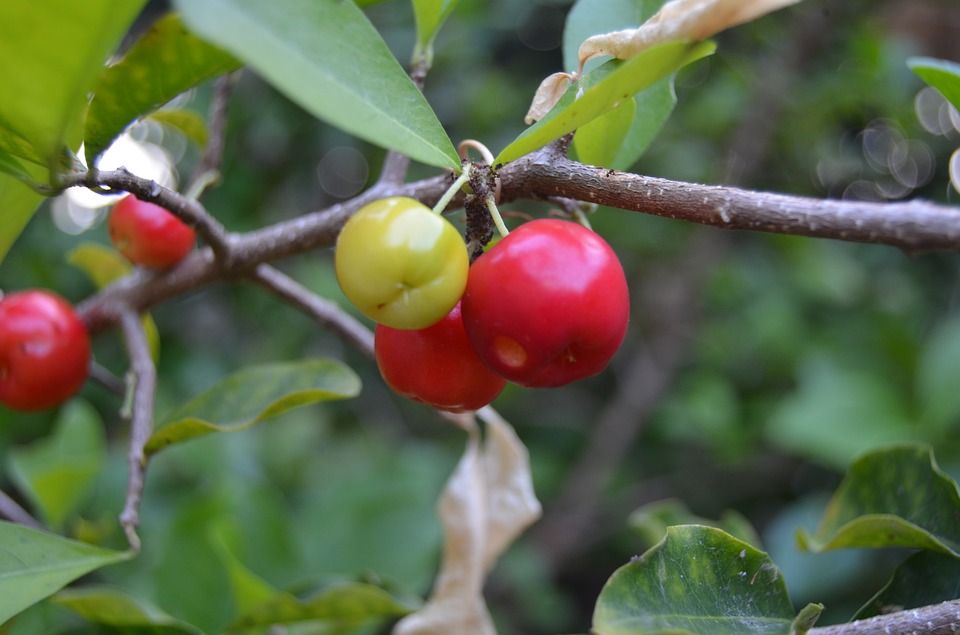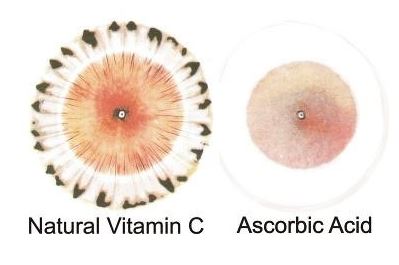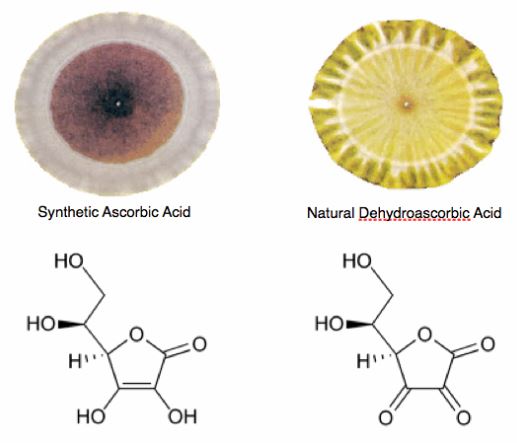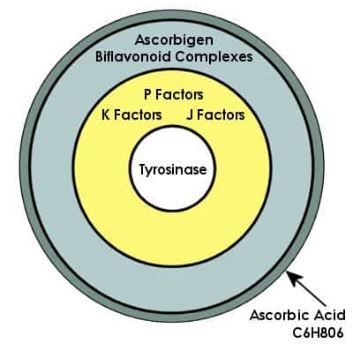The Benefits of Acerola Vitamin C
Article published by: Whole Food remedies | April 15, 2019
Most sources equate vitamin C with ascorbic acid, as though they were the same thing. They’re not. Ascorbic acid is an isolate, a fraction, a distillate of naturally occurring vitamin C. In addition to ascorbic acid, vitamin C must include rutin, bioflavonoids, Factor K, Factor J, Factor P, Tyrosinase, Ascorbigen, and other components as shown in the figure below:
- Ascorbigen
- Bioflavonoids
- Rutin
- Tyrosinase
- Factor J
- Factor K
- Factor P
NATURAL VITAMIN C VS SYNTHETIC (ASCORBIC ACID)
Mineral co-factors must be available in proper amounts in order to have vitamin activity. If any of these parts are missing, there is no vitamin C, no vitamin activity. When some of them are present, the body will draw on its own stores to try and make up the differences, so that the whole vitamin may be present. Only then will vitamin activity take place, provided that all other conditions and co-factors are present.
Ascorbic acid is described merely as the “antioxidant wrapper” portion of vitamin C; ascorbic acid protects the functional parts of the vitamin from rapid oxidation or breakdown. ([10] Somer p 58 “Vitamin C: A Lesson in Keeping An Open Mind” The Nutrition Report)
For decades, over 90% of ascorbic acid in this country was manufactured at a facility in Nutley, New Jersey, owned by Hoffman-LaRoche, one of the world’s largest drug manufacturers. Here ascorbic acid is made from a process involving cornstarch and volatile acids. For decades, most U.S. vitamin companies bought their bulk ascorbic acid from this single facility. After that, marketing takes over. Each company makes its own labels, its own claims, and its own formulations, each one claiming to have the superior form of vitamin C, even though it all came from the same place, and it’s really not vitamin C at all.
FRACTIONATED = SYNTHETIC = CRYSTALLINE = FAKE
The word synthetic means two things:
- man-made
- occurs nowhere in nature
From the outset, it is crucial to understand the difference between vitamins and vitamin activity. The vitamin is the biochemical complex. Vitamin activity means the actual biological and cellular changes that take place when the stage is set for the vitamin complex to act.
Think of it like gas and a car. Pumping the gas into the tank doesn’t necessarily mean the car is going anywhere. Other conditions and factors must be also present, in order for Activity to occur. The gas line to the carburetor must be clear, the carburetor jets must be set, there must be an exact mixture of air flow, the ignition must be turned on, the spark plugs must be clean, the exact amount of gas must reach each spark plug right before it fires, no gas must be left over in the cylinder after the plug fires, etc. Getting the idea? If any of this stuff is missing, there’s no Activity: the car doesn’t run, or at least not very well.
Amazing as it may sound if you’re hearing this for the first time, vitamins are more than the synthetic fractions we are commonly taught they are. The ascorbic acid you buy at the grocery store every few weeks, thinking you are buying Vitamin C, is just a chemical copy of naturally occurring ascorbic acid, which itself is still only a fraction of the actual Vitamin C. Real vitamin C is part of something living, and as such, can impart life.
Your synthetic, fractionated chemical ascorbic acid never grew in the ground, never saw the light of day, never was alive or part of anything alive. It’s a laboratory chemical, a cornstarch derivative, a sulfuric acid by-product. In your body it’s just another drug.
Synthetic vitamins have toxic effects from mega-doses and actually can increase the white blood cell count. Vitamins are only necessary in minute quantities on a daily basis. Whole food vitamins, by contrast, are not toxic since the vitamin is complexed in its integral working form, requires nothing from the body, and triggers no immune response.
DEFICIENCY
Scurvy is a disease caused by vitamin C deficiency. Scurvy is characterized by bleeding gums, slow wound healing, softening bones, loose teeth, ulcerations of the mouth and digestive tract, general weight loss and fatigue.
Whole food vitamin C, as found in Whole Food Remedies’ Acerola cherry extract, is able to quickly cure any case of scurvy. By contrast, the fractionated chemical ascorbic acid has been shown to be insufficient in resolving a scurvy condition, simply because it does not act as a nutrient. (Lancet 1842). Ascorbic acid simply cannot confer vitamin activity, as taught by the discoverer of vitamin C himself, another Nobel Prize laureate, Dr. Albert Szent-Georgi.
Royal Lee and Dr. Szent-Georgi both came to understand, ascorbic acid, rutin, and the other factors, were synergists: co-factors which together sparked the “functional interdependence of biologically related nutrient factors.” (Empty Harvest p120) The term “wheels within wheels” was coined to describe the interplay of co-factors.
Each of the other synergists in the C complex has a separate function:
- P factors for blood vessel strength
- J factors for oxygen-carrying capacity of red cells
- Tyrosinase as an essential enzyme for enhancing white blood cell effectiveness
Ascorbic acid is just the antioxidant outer shell – the protector of all these other synergists so that they will be able to perform their individual functions.
Other natural nutrients and co-factors found in Acerola cherries include:
- Vitamin A
- Vitamin B1 (Thiamine)
- Vitamin B2 (Riboflavin)
- Vitamin B3 (Niacin)
- Potassium
- Magnesium
- Selenium
- Copper
- Zinc
- Calcium
- Iron
- Phosphorus
- Protein
CONCLUSION
The natural vitamin C in Whole Food Remedies’ Acerola cherry extract does NOT produce any nutrient imbalances in the body. It is easily absorbable and naturally buffered with alkalinizing minerals present in the micronutrient-rich Acerola food matrix, and is richly complex with all the necessary cofactors to produce functional vitamin activity in our body without any unpleasant side effects. Food sources of the entire vitamin C complex are the only way to get nutrition as nature intended.





